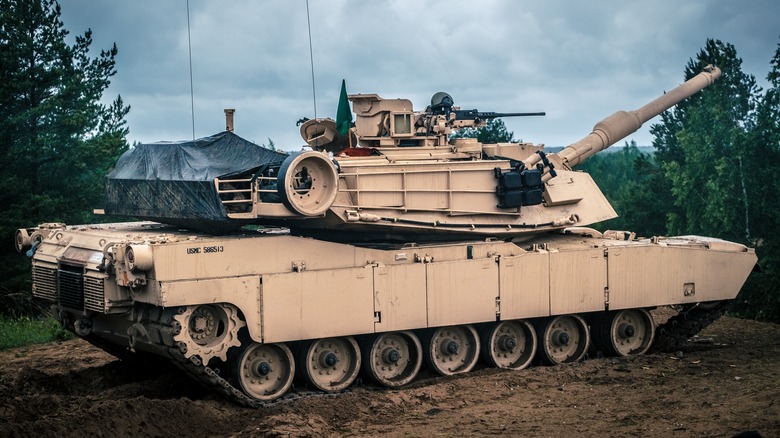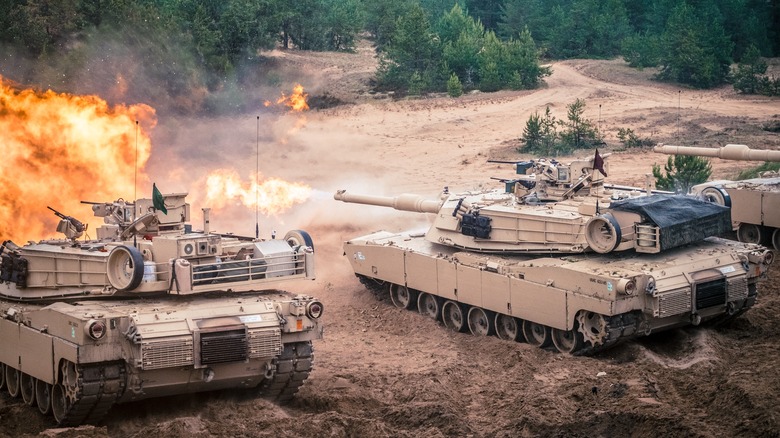The Unexpected Finale For The Legendary Abrams Tank
Last week, the U.S. Army announced that it's cancelling plans to update its existing M1 Abrams tank in favor of developing an all new battle tank called the M1E3 Abrams. The decision not to move forward with upgrading the classic M1 Abrams was based on observations made during Ukraine's war with neighboring Russia. In particular, the Army is concerned that the existing Abrams is too heavy, fuel thirsty, and vulnerable to modern enemy weapons.
Currently, Ukrainian troops are utilizing Germany's Leopard 2 tank, a machine that's considered superior to the Abrams in some circles, and its performance thus far has been disappointing. Despite initial optimism that the arrival of the Leopard 2 tanks might be a great asset to Ukraine, Russian troops have already destroyed 15 of them, by some outlets' accounting.
Since the new M1E3 Abrams is not expected to be operational until the early part of the 2030s, the U.S. is following through with plans to send 31 of the M1A1 Abrams tanks to Ukrainian troops anyway, in spite of the older tank's potential shortcomings. The first batch of six to eight U.S. supplied tanks is expected to be deployed into battle this month.
Its replacement could have hybrid power
Designed by Chrysler Defense, and named after Vietnam War-era General Creighton Abrams, the M1 has served as the main battle tank for U.S. military since the early 1980s. Perhaps the most distinguishing feature of the M1 Abrams is its propulsion system: a 1,500 horsepower gas turbine engine. According to engine manufacturer Honeywell, the turbine is optimized to run on jet fuel, but can also perform sufficiently well using diesel, gasoline, or marine diesel fuel.
Although the Abrams' unconventional turbine has a reputation for speed, reliability, and quiet operation, it's also extremely fuel thirsty. That could be a liability in Ukraine, where the superior Department of Defense logistics that typically support the tanks are absent. How fuel thirsty is it? Try 0.6 miles traveled per gallon of fuel, or 10 gallons per hour burned when idling motionless.
In the protection department, the M1 Abrams lacks native reactive armor which — as the name implies — is designed to react with incoming weapons (typically exploding outward) to reduce damage to the vehicle it's protecting. Although sanctioned reactive armor upgrades are available for the Abrams, Ukrainian troops may take a more grass roots approach and kit the tanks with additional armor scavenged from damaged Russian tanks — an approach that's already being utilized on the German Leopard 2 tanks.
In any case, retrofit reactive armor increases weight, which will further decrease fuel economy and mobility, especially in muddy conditions. Besides reduced weight, increased technology, and integrated reactive armor, the replacement M1E3 Abrams is also exploring an efficient hybrid conventional-electric propulsion system which would facilitate nearly silent, all-electric operation when necessary. Until then, the venerable M1 Abrams will soldier on.

